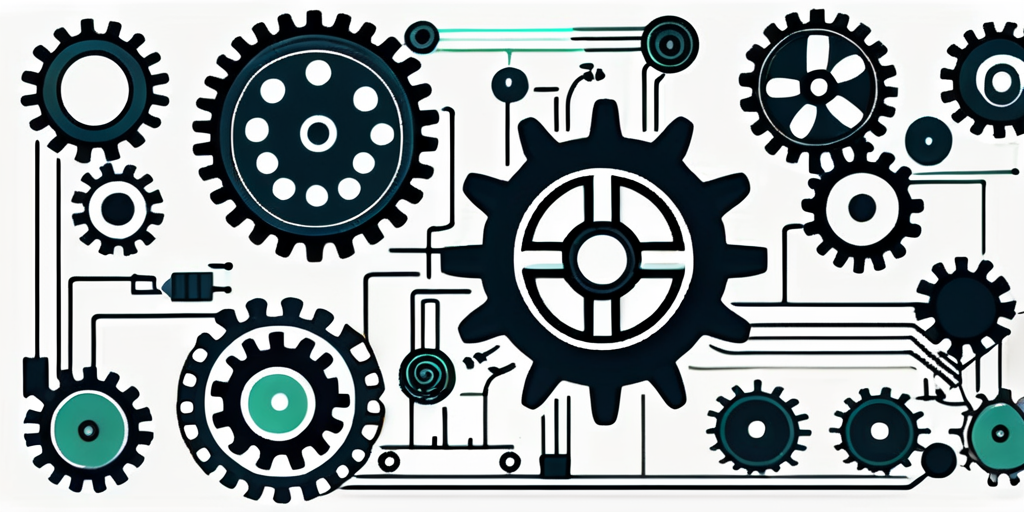In today’s fast-paced business landscape, efficiency and process optimization are key factors for success. One crucial element that plays a significant role in streamlining processes is the EPR number. Understanding the EPR number and its importance is essential for organizations looking to enhance their operations and stay competitive.
Understanding the EPR Number
The EPR number, also known as the Electronic Product Code Registration, is a unique identifier used to track and manage products throughout their lifecycle. It serves as a digital fingerprint for each product, enabling efficient inventory control, supply chain management, and product authentication.

But what exactly does the EPR number entail? Let’s dive deeper into its definition and function.
Definition and Function of the EPR Number
The EPR number is a globally recognized identifier assigned to a specific product or item. It consists of a unique combination of digits and letters, providing a standardized format for data capture and retrieval. This digital code allows for seamless product tracking, traceability, and accurate information exchange between trading partners, ensuring transparency and efficiency in business processes.
When a product is assigned an EPR number, it becomes part of a vast network of interconnected data systems. This network enables real-time visibility into the product’s journey, from manufacturing to distribution and beyond. Each time the product changes hands, the EPR number is updated, creating a comprehensive record of its movement and status.
Moreover, the EPR number plays a crucial role in ensuring product authenticity and preventing counterfeiting. By incorporating unique identifiers into the EPR number, such as encrypted codes or RFID tags, manufacturers can verify the product’s origin and integrity. This authentication process helps protect consumers from purchasing counterfeit goods and safeguards brand reputation.
The Role of EPR Number in Different Industries
Industries across the board, ranging from manufacturing and retail to healthcare and logistics, rely on the EPR number to streamline their operations. Let’s explore some specific examples:
In the healthcare sector, for example, the EPR number enables healthcare providers to track medical devices, medications, and patient records, ensuring accurate and efficient delivery of care. By scanning the EPR number associated with a particular medical device, healthcare professionals can access crucial information, such as its manufacturing date, expiration date, and usage guidelines. This level of traceability helps prevent medical errors, enhances patient safety, and simplifies the process of product recalls.
In the retail industry, the EPR number facilitates inventory management, simplifies point-of-sale processes, and minimizes errors in product pricing and tracking. Retailers can use the EPR number to keep track of stock levels, monitor product availability, and automate reorder processes. Additionally, during the checkout process, the EPR number can be scanned to ensure accurate pricing and prevent mismatches between the displayed price and the actual price at the point of sale.
Furthermore, the EPR number has proven invaluable in supply chain management and logistics. By integrating the EPR number into shipping labels and tracking systems, companies can monitor the movement of products in real-time. This visibility allows for efficient route planning, optimized delivery schedules, and proactive issue resolution. In turn, this leads to cost savings, improved customer satisfaction, and reduced environmental impact.
In conclusion, the EPR number serves as a vital tool in various industries, enabling seamless product tracking, authentication, and efficient business processes. Its standardized format and global recognition make it an essential component of modern supply chains, ensuring transparency, accuracy, and reliability.
The Connection Between EPR Number and Process Streamlining
Optimizing processes and achieving operational excellence are primary objectives for organizations. The EPR number plays a vital role in these efforts by enhancing efficiency and streamlining workflows.
In today’s fast-paced business environment, organizations are constantly seeking ways to improve their operations and stay ahead of the competition. One of the key factors that contribute to operational excellence is the efficient management of processes. By incorporating the EPR number into business processes, organizations can benefit from improved efficiency in various ways.
How EPR Number Enhances Efficiency
By incorporating the EPR number into business processes, organizations can benefit from improved efficiency in various ways. For instance, the unique identifier simplifies product identification and data capture, reducing time-consuming manual efforts.
Imagine a scenario where a company receives a large shipment of products. Without the EPR number, the employees would have to manually check each item and record its details, which could take hours or even days. However, with the EPR number, the process becomes much more streamlined. The employees can simply scan the EPR number on each item, and the relevant information is automatically captured in the system. This not only saves time but also reduces the chances of errors that can occur during manual data entry.
Additionally, the EPR number enables automated inventory management systems, ensuring real-time visibility of product availability and reducing the likelihood of stockouts or overstocking. With the EPR number, organizations can easily track the movement of products throughout the supply chain, from the moment they are received to the moment they are sold. This real-time visibility allows organizations to make informed decisions about inventory management, ensuring that they have the right products in the right quantities at the right time.
The Impact of EPR Number on Workflow Management
Efficient workflow management is critical to optimize productivity and minimize bottlenecks. The EPR number streamlines workflow management by providing accurate and standardized information across different departments and systems.
Imagine a scenario where a company has multiple departments involved in the production and delivery of a product. Without the EPR number, each department would have to manually communicate and exchange information, which can be time-consuming and prone to errors. However, with the EPR number, all departments can access the same standardized information, ensuring that everyone is on the same page and working towards a common goal.
Furthermore, the EPR number enables organizations to implement data-driven analytics and reporting, allowing for continuous process improvement and informed strategic decision-making. By analyzing the data associated with the EPR number, organizations can identify bottlenecks, inefficiencies, and areas for improvement in their processes. This data-driven approach empowers organizations to make informed decisions about process optimization, leading to increased productivity and reduced costs.
In conclusion, the EPR number plays a crucial role in enhancing efficiency and streamlining workflows. By simplifying product identification, enabling automated inventory management, and providing accurate and standardized information, the EPR number empowers organizations to optimize their processes and achieve operational excellence. As businesses continue to strive for efficiency and productivity, the EPR number will remain a valuable tool in their arsenal.
The Benefits of Using EPR Number in Business Operations
The utilization of the EPR number in business operations brings numerous advantages that organizations cannot afford to overlook.
Improving Operational Efficiency with EPR Number
Efficiency is a critical driver of success in today’s competitive landscape. By leveraging the EPR number, organizations can optimize their operational efficiency by reducing manual errors, improving data accuracy, and automating key processes. This ultimately leads to cost savings, improved customer satisfaction, and increased profitability.
Cost Reduction and EPR Number
The EPR number can significantly contribute to cost reduction efforts within organizations. Through its ability to streamline processes, the EPR number minimizes wasted resources, such as time and labor. By automating data collection and eliminating the need for manual interventions, organizations can reduce operational costs and redirect their resources towards strategic initiatives and growth-oriented activities.
Implementing EPR Number in Your Business
Integrating the EPR number into your business processes requires meticulous planning and a well-executed implementation strategy. Here are some key steps to consider:
Steps to Incorporate EPR Number in Your Processes
- Evaluate the suitability and relevance of the EPR number for your business operations.
- Identify the systems and processes that need to be updated to accommodate the EPR number.
- Train employees on how to utilize and leverage the EPR number effectively.
- Conduct pilot tests to ensure seamless integration and identify any potential issues.
- Monitor and evaluate the impact of the EPR number on your processes and make necessary adjustments.
Overcoming Challenges in EPR Number Implementation
Despite the numerous benefits, implementing the EPR number in your business operations may present some challenges. Common obstacles include resistance to change, lack of system compatibility, and compliance with industry standards. To overcome these challenges, it is essential to engage stakeholders, communicate the benefits of the EPR number, and collaborate with technology partners to ensure a smooth and successful implementation.
The Future of EPR Number in Business Process Management
The rapid advancement of technology is reshaping the business landscape, and the future of the EPR number appears promising.
Technological Advancements and EPR Number
Technological advancements, such as the Internet of Things (IoT), Big Data analytics, and blockchain, are transforming the way businesses operate. These advancements offer exciting opportunities for the evolution and further utilization of the EPR number. For example, IoT devices can communicate with EPR-enabled systems, providing real-time visibility of product location and condition throughout the supply chain.
EPR Number and the Evolution of Business Processes
As businesses continue to prioritize efficiency and agility, the EPR number will continue to play an integral role in the evolution of business processes. Its ability to streamline operations, enhance data accuracy, and support decision-making will remain crucial in an increasingly digital and interconnected world.
In conclusion, the EPR number is a vital tool for organizations looking to streamline their processes and enhance operational efficiency. By understanding its function, benefits, and implementation strategies, businesses can leverage the EPR number to drive growth, reduce costs, and stay ahead in today’s competitive landscape.

